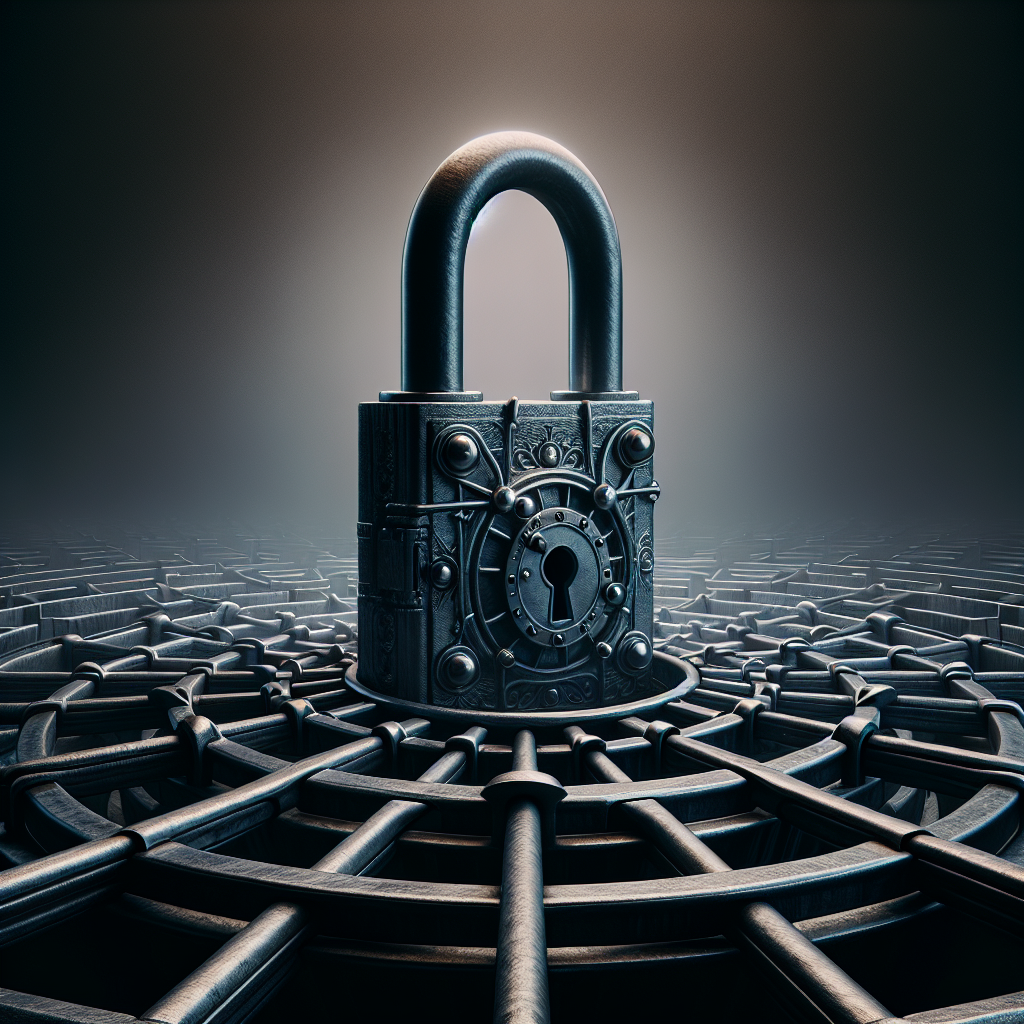In a world that can sometimes feel chaotic and unpredictable, it’s important to equip yourself with practical self-defense tactics that can help you navigate through a lawless landscape. Whether you find yourself in a dangerous neighborhood or simply want to feel more secure in your daily life, learning effective self-defense techniques can provide you with the confidence and skills you need to protect yourself. In this article, we will explore a range of practical self-defense tactics that anyone can implement, empowering you to navigate through the challenges of an increasingly uncertain world. So, let’s dive into the world of self-defense and discover some valuable strategies that can help you feel safer and more prepared in any situation.
Understanding the Lawless Landscape
In today’s world, it is essential to be aware of the potential dangers that exist in a lawless landscape. Whether you live in a crime-ridden neighborhood or find yourself in unfamiliar surroundings, understanding the factors that contribute to lawlessness and recognizing the dangers can help you stay safe. By developing situational awareness, learning basic self-defense techniques, and understanding how to deal with various threats, you can significantly increase your personal safety in a lawless landscape.
Defining a lawless landscape
A lawless landscape refers to an environment where law enforcement is ineffective or non-existent, and criminal activity prevails. This can include areas with high crime rates, regions affected by civil unrest or political instability, or even places where regular law and order have broken down. In such an environment, individuals must take responsibility for their own safety and well-being.
Factors contributing to a lawless landscape
Several factors can contribute to the emergence of a lawless landscape. These may include social inequality, economic instability, political unrest, corruption, gang violence, and inadequate law enforcement. In some cases, natural disasters or conflicts can also contribute to the breakdown of law and order. Understanding these underlying factors helps us navigate and respond to the challenges that may arise in such environments.
Recognizing the dangers
Being aware of the potential dangers in a lawless landscape is crucial for your personal safety. These dangers can range from street crimes such as muggings, robberies, and assaults to more organized criminal activities like kidnapping or human trafficking. By recognizing these dangers, you can take steps to mitigate the risks and ensure your own security.
Developing Situational Awareness
Why situational awareness is crucial
Situational awareness is the ability to understand what is happening around you and the potential threats that may be present. It allows you to identify and assess your surroundings, enabling you to make informed decisions and take proactive measures for your safety. Developing situational awareness is crucial in a lawless landscape as it helps in detecting potential dangers and taking preemptive actions.
Observing your surroundings
To enhance your situational awareness, start by observing your surroundings. Pay attention to details such as people’s behavior, body language, and any suspicious activities or objects. Take note of potential escape routes and safe areas nearby. By actively observing your environment, you can quickly identify any potential threats and take appropriate actions.
Identifying potential threats
In a lawless landscape, it’s essential to be able to identify potential threats to your safety. These threats can be individuals acting suspiciously, groups of people gathering in an aggressive manner, or even environmental factors like poorly lit areas or abandoned buildings. By recognizing these potential threats, you can avoid or minimize your exposure to dangerous situations.
Basic Self-Defense Techniques
Maintaining a confident posture
One of the most effective self-defense techniques is maintaining a confident posture. Stand tall, keep your head up, and make direct eye contact with others. This projects an image of strength and confidence, potentially deterring potential attackers. Additionally, a confident posture can help you appear less vulnerable and make it easier for you to assess and respond to potential threats.
Utilizing verbal assertiveness
Verbal assertiveness can play a crucial role in self-defense. By speaking with confidence and using assertive language, you can communicate your boundaries and make it clear that you are not an easy target. Use clear phrases such as “Stop! Stay back!” or “I don’t want any trouble” to deter potential attackers and attract attention from others who may assist you.

Escaping from grabs and holds
Being able to escape from grabs and holds is essential for self-defense. Learn basic techniques such as wrist releases, palm strikes, and elbow strikes to free yourself from an attacker’s grip. Practice these techniques regularly to develop muscle memory and improve your ability to defend yourself in a dangerous situation.
Protection and Deterrence
Carrying personal protection devices
Carrying personal protection devices can provide an added layer of security in a lawless landscape. These devices can include pepper spray, personal alarms, or even stun guns. However, it is crucial to familiarize yourself with local laws and regulations regarding the use and possession of such devices to avoid legal consequences.
Legal considerations for self-defense tools
Before carrying any self-defense tool, it is essential to understand the legal considerations associated with it. Research local laws and regulations to ensure that you comply with all legal requirements. Additionally, consider learning how to responsibly and effectively use these tools through professional self-defense training.
Creating a deterrent presence
Creating a deterrent presence can discourage potential attackers from targeting you. Maintain an alert and assertive demeanor while walking or moving through unfamiliar areas. Walk purposefully and avoid displaying signs of vulnerability. Using assertive body language, such as keeping your head up and scanning your surroundings, can make you a less attractive target.
Effective Strikes and Targets
Vulnerable areas to target
When defending yourself, it is crucial to target an assailant’s vulnerable areas. These areas include the eyes, nose, throat, groin, and knees. Striking or using defensive moves on these vulnerable targets can quickly incapacitate an attacker and create an opportunity for escape.
Executing effective strikes
Learning effective striking techniques can significantly improve your chances of defending yourself in a lawless landscape. Practice techniques such as punches, kicks, knee strikes, and palm strikes to develop proficiency. Effective strikes can help you immobilize an attacker, giving you time to escape or seek assistance.
Practicing striking techniques
Regular practice is key to improving your striking techniques. Find a qualified self-defense instructor or join a martial arts class to learn and practice proper striking techniques. Practicing these techniques regularly will help you develop muscle memory, speed, and accuracy, enhancing your effectiveness in self-defense situations.
Defending Against Multiple Attackers
Assessing the situation
When facing multiple attackers, it is essential to assess the situation quickly. Determine the number of attackers and their positions relative to yours. Identify potential escape routes or objects in your environment that you can use to your advantage. By assessing the situation, you can make informed decisions about how to defend yourself effectively.

Creating distance and movement
Creating distance and movement is crucial when defending against multiple attackers. By putting distance between yourself and your assailants, you reduce the likelihood of being overwhelmed. Use evasive footwork and angles to disorient your attackers and create opportunities to escape or counterattack.
Using the environment to your advantage
In a lawless landscape, the environment can be your ally. Use objects or obstacles in your surroundings to your advantage. For example, narrow alleyways can limit attackers’ movements, and doorways can create chokepoints. By using the environment strategically, you can increase your chances of defending against multiple attackers.
Escaping Dangerous Situations
Recognizing when to disengage
Knowing when to disengage from a dangerous situation is crucial for your safety. If you realize that the situation is escalating and it becomes clear that you cannot defend yourself effectively, it’s essential to prioritize your own well-being and seek an opportunity to disengage. Trust your instincts and remove yourself from the danger zone whenever possible.
Creating opportunities for escape
When attempting to escape from a dangerous situation, create opportunities for yourself. Look for distractions or opportunities to divert an attacker’s attention. Use your surroundings to your advantage, such as crowded areas or well-lit streets. By creating opportunities for escape, you increase your chances of getting to safety.
Using self-defense tools for diversion
If you are carrying self-defense tools, they can serve as a distraction or diversionary tactic when trying to escape. For example, activating a personal alarm or using a non-lethal deterrent like pepper spray can momentarily incapacitate or disorient attackers, allowing you to escape. However, it is crucial to familiarize yourself with the proper use of these tools and exercise caution to avoid unintended consequences.
Dealing with Armed Assailants
Strategies against assailants with weapons
When facing an armed assailant, your strategy must focus on survival and escape. Do not attempt to disarm the attacker unless you have received proper training in weapon retention and disarming techniques. Instead, create distance, block or evade the weapon, and seek opportunities for escape.
Defense against knives and sharp objects
Defending against knives and sharp objects requires skill and precision. Key principles include maintaining a safe distance, avoiding direct confrontation, and using evasive footwork to keep out of the attacker’s range. If forced to defend yourself, focus on blocking and off-balancing techniques rather than trying to disarm the attacker.
Countering armed attackers
Countering armed attackers should be a last resort and done only if you have no other option. If you must fight back, target the assailant’s vulnerable areas or use improvised weapons to defend yourself. Remember, the goal is to create an opportunity to escape, not to engage in a prolonged confrontation.
Self-Defense Training and Preparedness
Seeking professional self-defense training
To develop effective self-defense skills, seeking professional training is highly recommended. Look for reputable self-defense schools, martial arts academies, or instructors specializing in real-world self-defense techniques. Proper training will equip you with the skills, knowledge, and confidence necessary to protect yourself in a lawless landscape.
Developing physical fitness and strength
Physical fitness and strength are essential components of self-defense. Regular exercise, focusing on cardiovascular endurance, strength, and flexibility, can enhance your overall performance and ability to defend yourself. Incorporate activities like running, weightlifting, and martial arts training into your fitness routine to improve your physical preparedness.
Practicing self-defense drills
Regularly practicing self-defense drills is key to building muscle memory and maintaining readiness. Work with a training partner or join a self-defense class to practice various scenarios and techniques. These drills simulate real-world situations and allow you to refine your skills and responses.
Maintaining Emotional Resilience
Handling fear and panic
Facing danger in a lawless landscape can evoke fear and panic, but it is crucial to maintain emotional resilience. Stay focused on your surroundings and stay in control of your emotions. Take deep breaths to calm yourself, reaffirm your training and capabilities, and rely on your instinctual reactions to navigate through challenging situations.
Cultivating a warrior mindset
Cultivating a warrior mindset involves developing mental strength, discipline, and a mindset of unwavering resolve. Embrace the idea that you have the power and the right to defend yourself. Train yourself to think strategically and stay calm under pressure. A warrior mindset empowers you to face adversity head-on and overcome the challenges of a lawless landscape.
Processing and recovering from traumatic experiences
In the unfortunate event of a traumatic experience, it is essential to seek support and assistance for processing and recovering from the ordeal. Reach out to trusted friends, family, or professionals who can help you navigate the emotional aftermath. Recognize that everyone’s journey to recovery is unique, and taking the time to heal is crucial for long-term emotional resilience.
In conclusion, understanding the lawless landscape and equipping yourself with practical self-defense tactics are crucial steps towards ensuring your personal safety. By developing situational awareness, learning basic self-defense techniques, and maintaining emotional resilience, you can navigate through challenging environments with confidence. Remember, self-defense is about empowering yourself and taking control of your own safety in a world that may sometimes seem unpredictable. Stay informed, stay alert, and stay safe.
